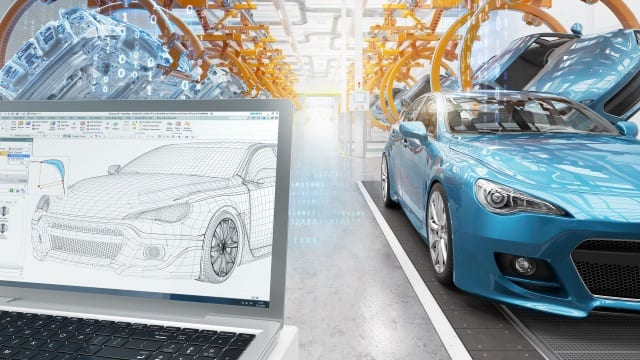Digital twin growth led by automotive, energy and manufacturing sectors
At a high level, the goal of investing in the internet of things is to capture and analyze data from the physical world–machines, people, products, nature, everything–in pursuit of process efficiencies. For a manufacturer, for instance, connecting a factory with sensors can help managers quickly identify and improve process problems thereby increasing overall equipment effectiveness. As enterprises of all sorts look to manage increasingly complex yet vital IoT system, digital twin technologies are poised to pop, according to new research.
Firm Markets and Markets reckons the digital twin market will grow from $3.8 billion in 2019 to $35.8 billion by 2025, representing a compound annual growth rate north of 37%. “Major factors surging the demand for digital twin include declining time and cost of product development and unplanned downtime…” The group calls out automotive, transport, oil and gas and manufacturing as key sectors for digital twin adoption. Markets and Markets identifies the major players as GE, IBM, PTC, Microsoft, Siemens, Ansys, SAP, Oracle and Bosch.
Ansys, for instance, in May joined Microsoft, Dell and Lendlease on the Digital Twin Consortium steering committee; that group is focused on “coalesc[ing] industry, government and academia to drive consistency in vocabulary, architecture, security and interoperability of digital twin technology. It advances the use of digital twin technology from aerospace to natural resources.”
To the vocabulary point, the consortium defines a digital twin as “virtual models of a process, product or service that allow for data analysis and system monitoring via simulations” to make data-based decisions around maintenance, sustainability, efficiency and performance.
Ansys CTO Prith Banerjee said it hopes “to radically advance digital twin development and further its safe and efficient deployment across our customer base.”
Whereas a digital twin or twins provide a real-time virtual model of a machine or system of machines, a digital thread extends the concept to essentially follow the entire lifecycle of the product in question. For a manufacturer, this would mean its internal use of digital twins for optimizing OEE would be part of a digital thread that extends into its supply chain, logistics partners and even the point of retail sale.
Siemens and SAP have agreed to offer each other’s industrial production software as complementary solutions in an integrated Industry 4.0 offer, enabling a digital thread between lifecycle management and business operations. SAP will offer Siemens’ cloud-based Teamcenter software to customers as the core foundation for product lifecycle collaboration and product data management. Teamcenter allows industrial users to edit product data and processes, including digital designs, embedded software, documentation, and bill of materials, in a live format, effectively, to cascade changes across design, production, and supply chain.
Thomas Saueressig, head of product engineering at SAP, said: “Bringing together expertise from SAP and Siemens to offer Industry 4.0-enabled business processes allows enterprises to create a digital thread for the entire product and asset lifecycle. With this end-to-end solution, teams across the business network can efficiently work together to design and deliver innovative products productively, profitably and sustainably.”

